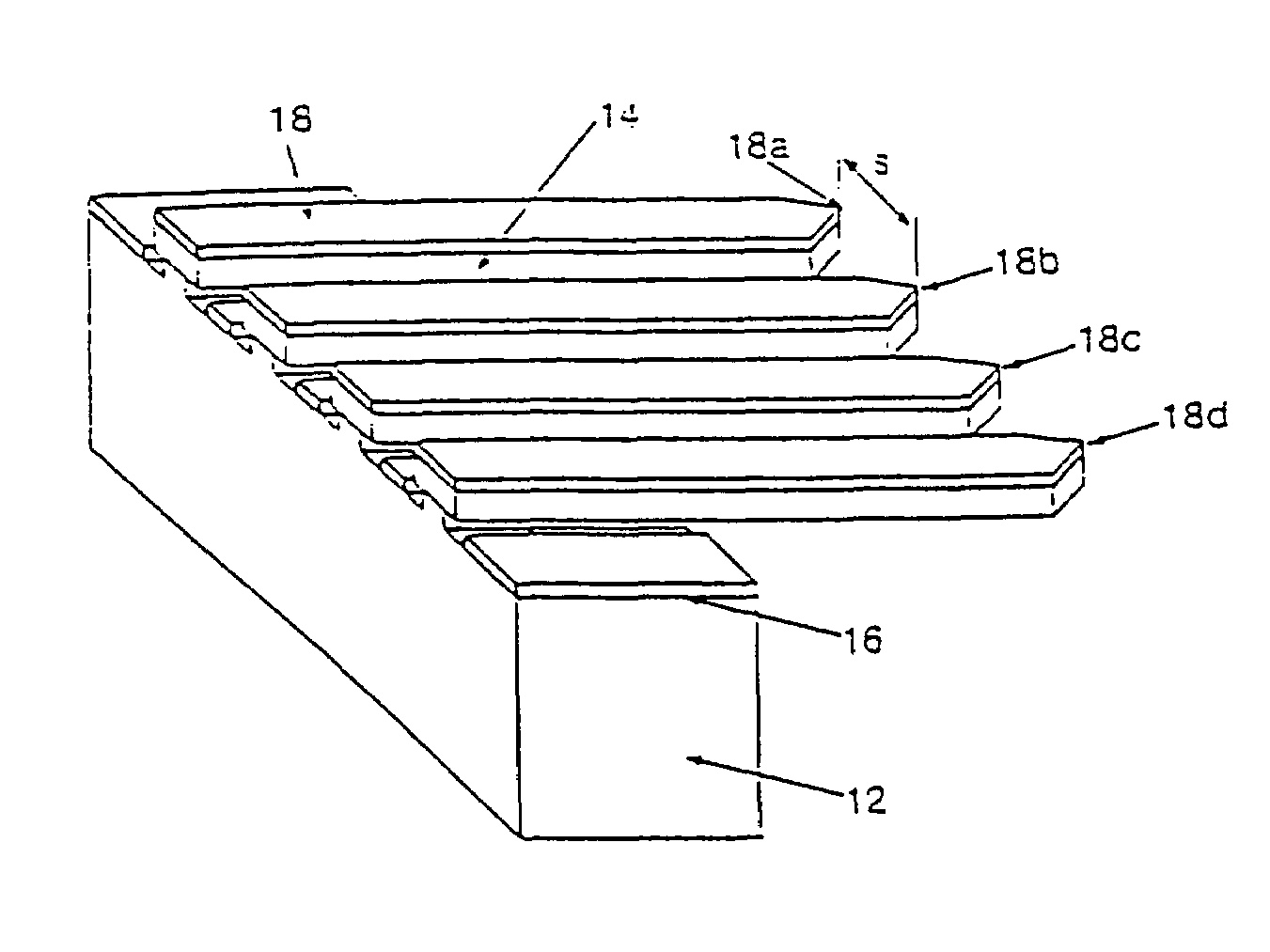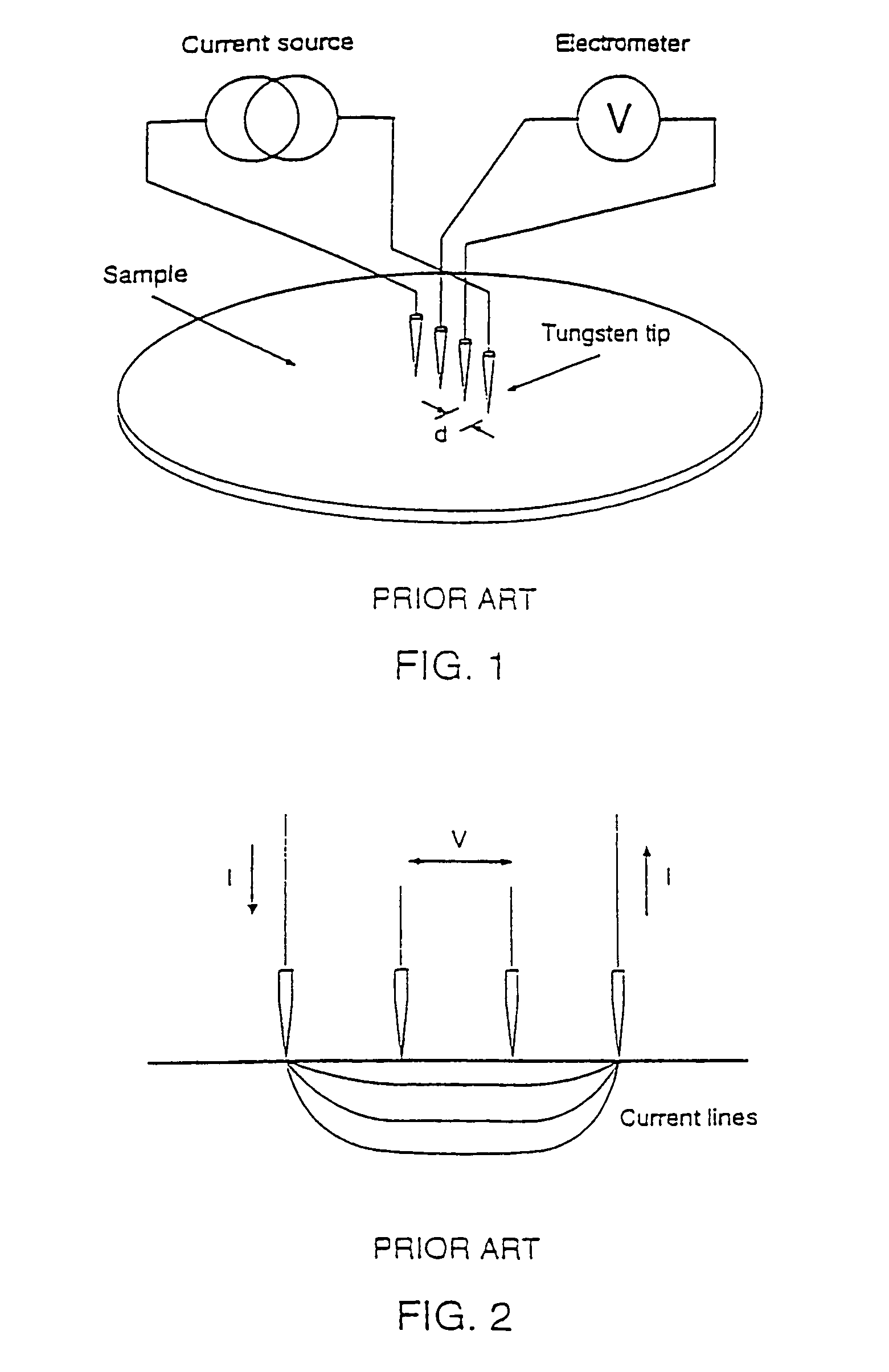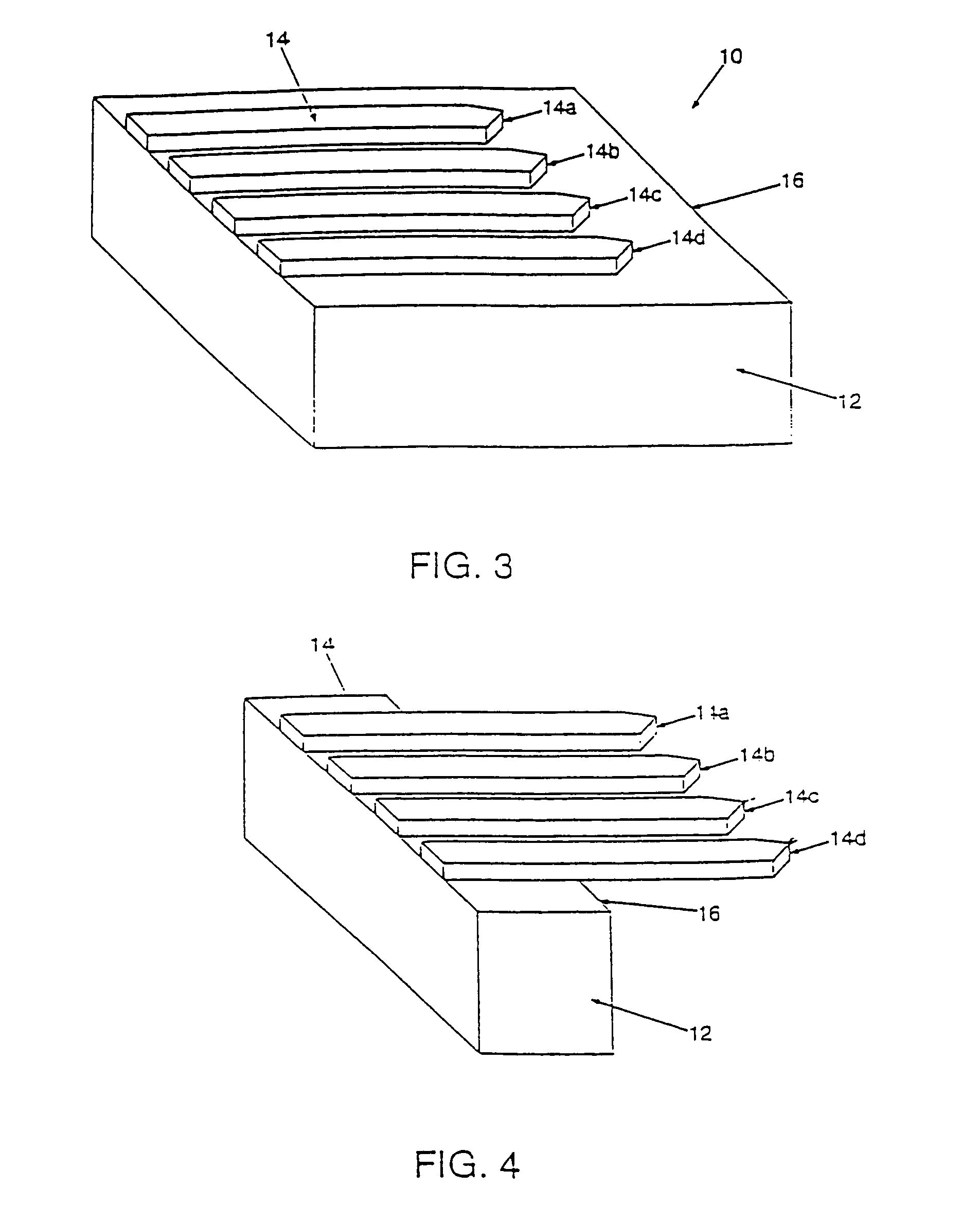Multi-point probe
a multi-point probe and probe body technology, applied in the direction of individual semiconductor device testing, semiconductor/solid-state device testing/measurement, instruments, etc., can solve the problems of one tip with inferior physical contact, and no technology is currently available to obtain the electric properties of individual devices on semiconductor wafers
- Summary
- Abstract
- Description
- Claims
- Application Information
AI Technical Summary
Benefits of technology
Problems solved by technology
Method used
Image
Examples
Embodiment Construction
[0091]A preferred embodiment is directed toward making a multi-point probe and is described with respect to FIGS. 3-6.
[0092]FIG. 3 shows a wafer 10, for example a section of a semiconductor wafer, in intermediate state of fabrication. It shows a surface 16 of a substrate 12 covered by a support layer 14, being electrically isolating, such as silicon oxide. The deposition of the support layer 14 can be accomplished by any technique known in the art, such as chemical vapour deposition (CVD), plasma enhanced CVD (PECVD), electron cyclotron resonance (ECR) or sputtering. As shown in FIG. 3, the support layer 14 is patterned and etched to form beams with tapered end-points 14a-d. The beams are not limited to any particular form or symmetry; they can be of any geometry with suitable end-points.
[0093]The pattern is formed by forming a photoresist pattern (not shown in FIG. 3) which defines the four beams on the top surface of the support layer 14. The photoresist pattern is formed by conve...
PUM
 Login to View More
Login to View More Abstract
Description
Claims
Application Information
 Login to View More
Login to View More - R&D
- Intellectual Property
- Life Sciences
- Materials
- Tech Scout
- Unparalleled Data Quality
- Higher Quality Content
- 60% Fewer Hallucinations
Browse by: Latest US Patents, China's latest patents, Technical Efficacy Thesaurus, Application Domain, Technology Topic, Popular Technical Reports.
© 2025 PatSnap. All rights reserved.Legal|Privacy policy|Modern Slavery Act Transparency Statement|Sitemap|About US| Contact US: help@patsnap.com



